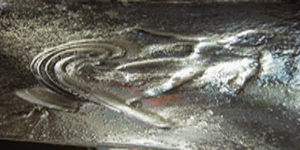
Representation
in Action
| Reading Schedule |
The list below will give you an idea of what I think we should cover in the course and the order in which we will read the main sources. Because the field is changing quickly, one of the course activities will be to seek out and read more recent articles. All of the books are available (either new or used) on Amazon.com as of today 20 December 2010. |
| Initial reading list |
Gibson, J.J. (1986) The ecological approach to visual perception. Earlbaum. The current shift in the notion of representation owes much to the pioneering work of J.J. Gibson. We will read most of the chapters in this book as a foundation for what comes later. Varela, Francisco (1991) Enaction: Embodied Cognition. Chapter 8 in F. Varela, E. Thompson, and E. Rosch (eds.) The Embodied Mind. MIT Press. This is an early statement by Varela of the main elements of the enaction perspective. Barsalou, Larry (1999) Perceptual Symbol Systems. Behavioral and Brain Sciences 22, 577 - 660 Noe, Alva (2004) Action in perception. MIT Press. An essential piece of the new puzzle. Noe makes a strong case for the necessity of understanding the contents of perception as products of enaction. One reason to read Gibson first is to see how much Noe learned from him. Rowlands, Mark (2006) Body language: representation in action. MIT Press. Rowlands, a surfing philosopher, introduces and explains the concept of "deeds" which are forms of action that have representational properties. The course title is borrowed from Rowland's sub-title. Spivey, Michael (2007) The continuity of mind. Oxford University Press. An attempt to give a coherent statement of the dynamical systems approach to mental phenomena. In his next to last chapter, Spivey tackles the role of the external environment and this requires a rethinking of representations. This reading marks something of a change of emphasis in the course from enaction to dynamical systems. |
| Additional reading (not required) |
I was considering the following as well, but I think that with some supporting articles, we have plenty of material to take on board in the readings above. It is worth reading, but will not be required for this course. Ingold, Tim (2000) The perception of the environment: essays in livelihood, dwelling and skill. Routledge. Ingold, a social anthropologist, develops a framework for understanding perception as a skill that grows out of the cutural practives through which people engage their surroundings. Most of the authors above pay lip service to the notion that culture organizes perceptual and conceptual skills, but they do little to examine what those higher level skills are or how they work as elements of a cultural ecology. Ingold takes a whack at that problem from the anthropological end. Thompson, Evan (2007) Mind in life: biology, phenemenology, and the sciences of mind. Harvard University Press. In this book Thompson attempts to complete a project, begun in collaboration with the late Francisco Varela, to articulate the implications for cognitive science ( Mind) of the biological concept of autopoiesis (Life).
|